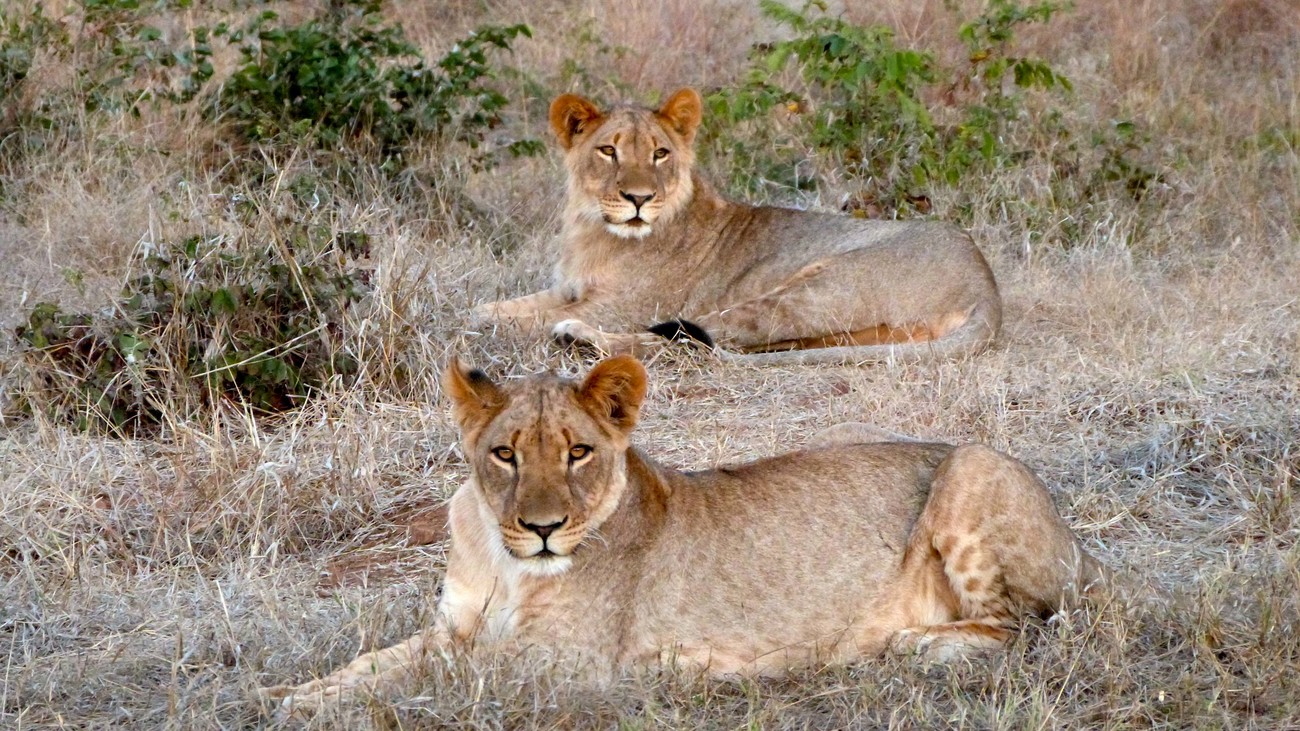Updates
Relief and recovery for animals and people in Myanmar
Read morelions on the rise in the Panda Masuie Forest

A few years ago, the only sounds to disturb the nocturnal peace of the Panda Masuie Forest were the trilling of freckled nightjars, the hoots of owls and the occasional whoops of a hyena. All that has changed and the nightly serenade is now altogether more diverse, including the noise of lions roaring.
Five camera traps set by the IFAW Protecting Panda Masuie Project are giving up the secrets of the forest. Activated by animal movement, they show that lions are thriving in the 34,000 ha Forest Reserve near Victoria Falls, Zimbabwe. Lions (Panthera leo) are listed as vulnerable on the IUCN Red List with only an estimated 25,000-39,000 remaining in the wild across Africa.
“The traps are a vital tool in helping us get an indication of the lion population. In Zimbabwe there is a tradition of counting game by the numbers of wildlife that visit a waterhole over a 24-hr timespan. Unlike elephants, lions don’t rely on a daily drink of water to stay hydrated as much of their liquid needs comes from their prey. It makes it harder to accurately assess numbers,” says Project Manager, Jos Danckwerts.
“The camera traps are showing us regular movement by different individuals in and out of the Forest Reserve. In addition we have a resident pride of 10 lions that includes one adult male, four adult females and five adolescent cubs, and a coalition of two adult males – probably brothers – that are regularly seen.”
The Panda Masuie Forest Reserve near Victoria Falls is co-managed by the Forestry Commission of Zimbabwe and the Wild is Life Trust (WIL), a Zimbabwean not for profit organisation) with the help of the International Fund for Animal Welfare (IFAW). The Protecting Panda Masuie project is supported by IUCN Save Our Species and co-funded by the European Union.
An increasing lion population is a good indicator of the health of the overall ecosystem.
“Four years ago, when we first came to Panda Masuie the animal population was quite low–including that of plains game like antelope which are primary source of food for lions. Depleted prey, indiscriminate poaching methods like snaring and loss of habitat are one of the biggest threats to lions,” says Danckwerts.
“A robust approach to secure the landscape by supporting Forestry Commission rangers in their work to prevent poaching and trafficking has paid dividends. We are seeing a big bounce back in wildlife numbers–including the number of lions, a sure sign that our methods are working.”
The nearby Masuwe community of about 800 people also benefit from the project which supports the sustained health of their herd of about 600 cattle with the provision of veterinary care and a dip tank to keep the animals free from parasites and diseases.
During COVID-19 the support of IUCN Save Our Species co-funded by the European Union enabled the purchase and installation of the camera traps, supported ranger deployment and ranger refresher training.
With the support of IUCN Save Our Species, co-funded by the European Union.
This publication was produced with the financial support of the European Union through IUCN Save our Species. Its contents are the sole responsibility of IFAW and do not necessarily reflect the views of the IUCN or the European Union.
Our work can’t get done without you. Please give what you can to help animals thrive.
Unfortunately, the browser you use is outdated and does not allow you to display the site correctly. Please install any of the modern browsers, for example:
Google Chrome Firefox Safari